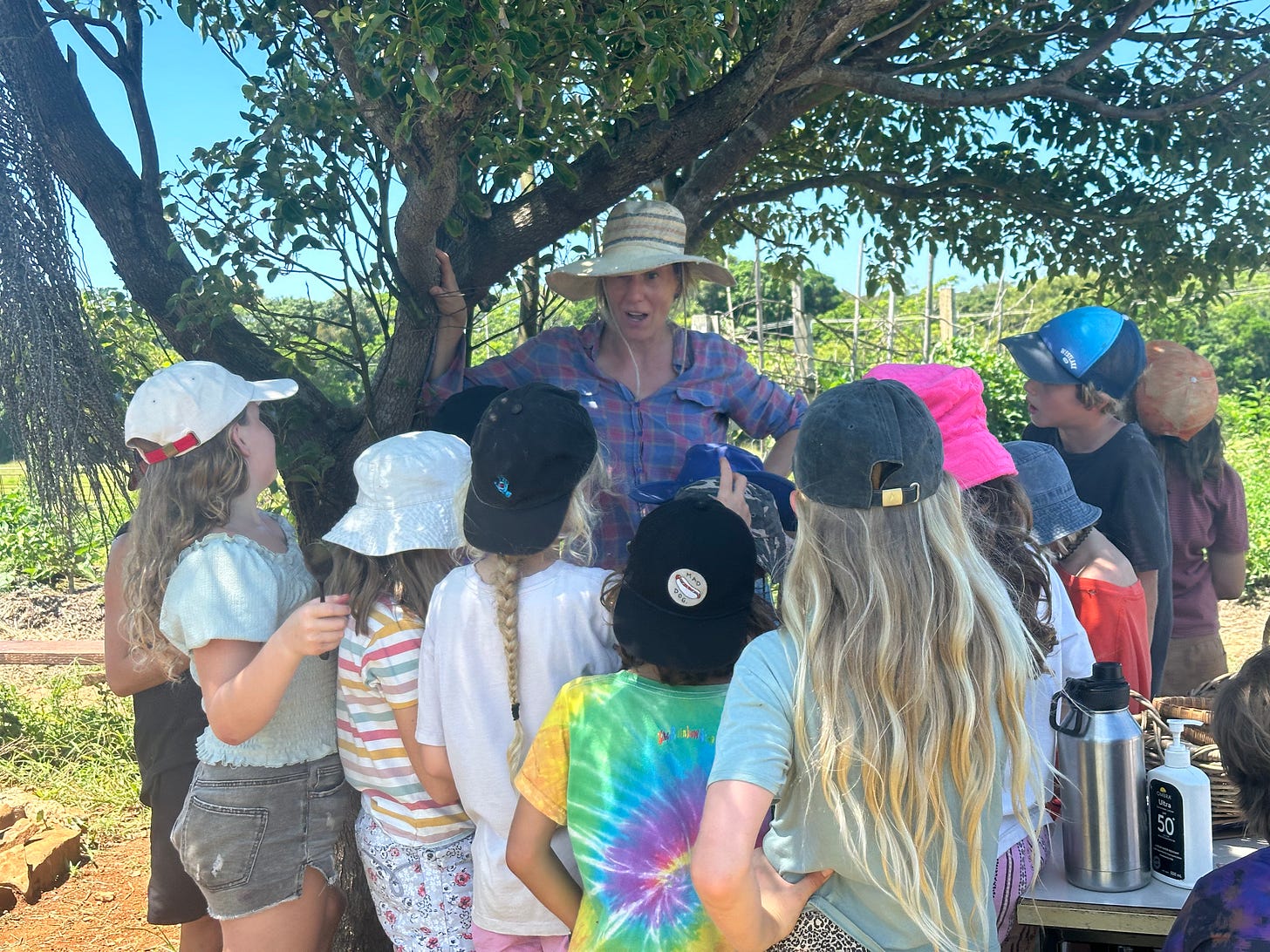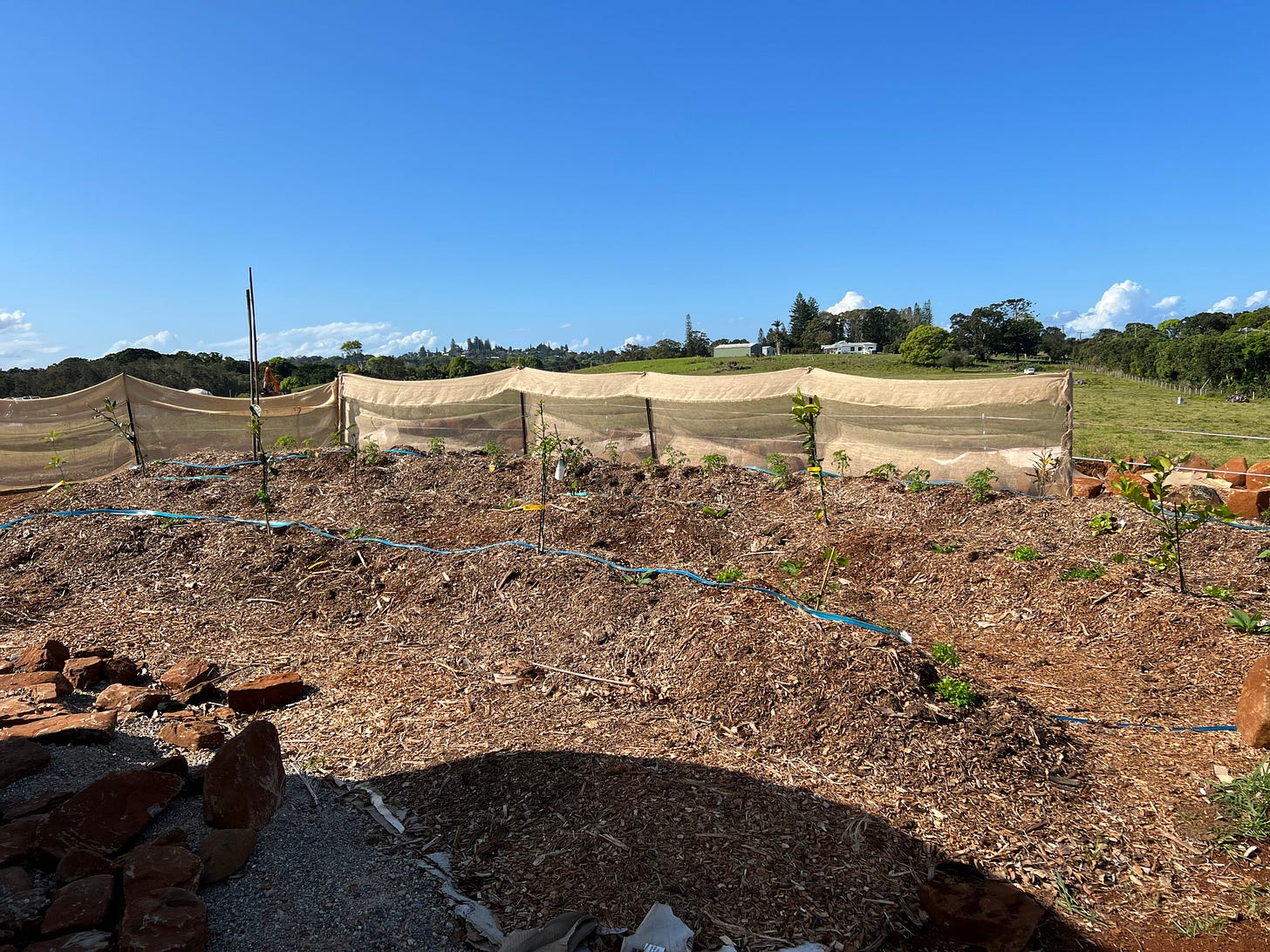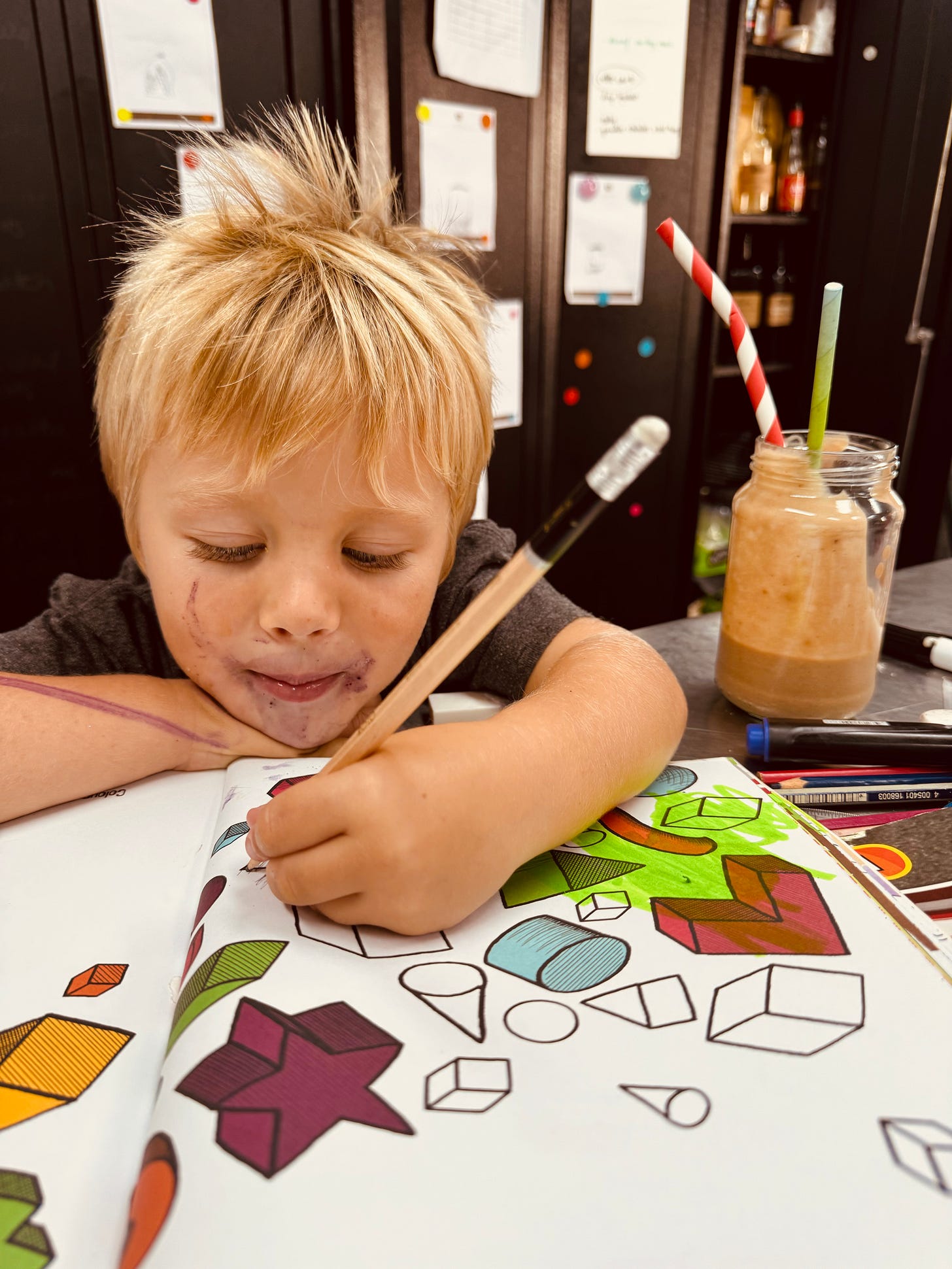Living School lives in its garden and kitchen
WHO IS GROWING AT THE MOMENT?
Who is growing at the moment is a question all in the Living School Kitchen Garden ask each week.
Is it the parsley, is it the birds, is it the fruit trees, is it the planet? Is it us?
Hopefully, it is all of those things.
It is the key to the learning our kids experience because it creates the focus on the garden and all that comes out of it, and into us. Especially, as much of what we study, collect, chop and cook in the garden also ends up in our Living School Canteen or, as we call it, Jabay, which is the Bundjalung word for food or ‘a feed’.
The Living School Kitchen Garden (LSKG) was created as part of the school’s Onland Learning Program to offer the children total immersion in a living organic food ecosystem. It was created from scratch by Aidan with the help of the students and their parents and has been growing on the top of a hill in a paddock surrounded by cows for over two years now.
Last year, we created a seasonal diary to record what we all learned and, in 2025, we are repeating the cycle and publishing our experiences. This child-centric expose encapsulates the learning community’s intentions. Each week, the garden and Jabay team delight in the student’s reactions to what they have grown, plucked and produced on the open fire and in our kitchen.
You will be amazed at how much learning goes on from the bugs to the soil, to the seasons and weather, the colour, textures, smells - the overall interconnectedness of everything in our natural world.
Living School has a unique calendar that spreads over six terms covering the themes of Identity, Nature, Life and Living, Civilisation, Phenomena and Service. We have carried those themes into the teaching that comes out of the garden as we work with different year groups to study these themes to different levels of complexity.
Term One, Week One and Two were an exciting time in the garden as the year got started and the garden revealed its treasure.
But before we get going, meet the team who bring the garden-inspired creations to the children and now you!
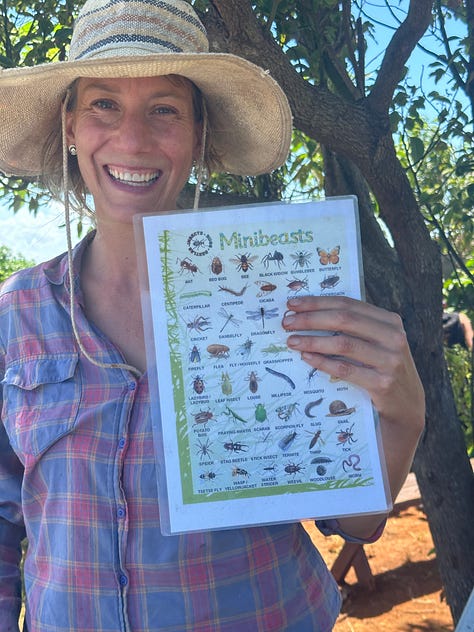
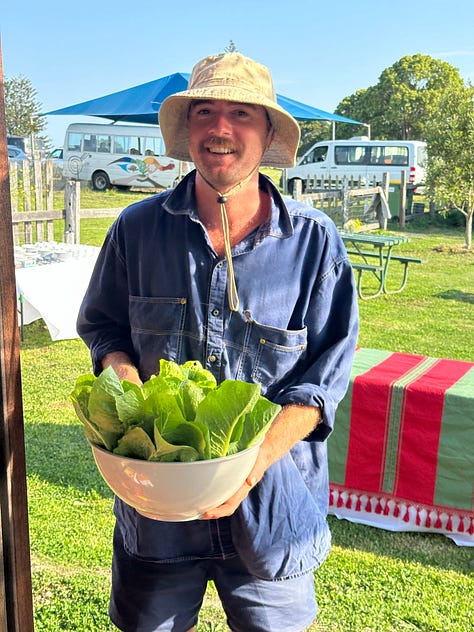

TIFF’S INTENTION IN TEACHING ABOUT THE GARDEN
LSKG is all about teaching the ways and wonders of ‘The Garden” and how it teaches us “to give” and “to take” and to discover the community of living things working together to make ‘The Garden”.
We pay attention to the life in every layer: the soil, plants, animals, pollinators etc. We grow our connection to the abundant world and experience how everything is in relationship. We live the learning and teachings from ‘The Garden’.
And, it didn’t take long to get the garden party started this year.
In our culture, we are obsessed with what we can “take” and don’t pay respect to the reciprocal nature of our relationship with the earth. The class collected manure for the beds, planted seedlings, weeded the beds and then water water watered them.
Then came ‘the take’ as we celebrated our bounty by cooking it directly on an open fire.
We have cooked an array of garden recipes over the seasons since we began - from flatbreads flavored with herbs and spinach from The Garden, to young broad-bean leaf pesto, to scrumptious purple cauliflower nibbles.
When we can, we cook on an open fire because this is where the magic happens. We slow down and enjoy, grounding in our ancestral roots, cooking together from what we’ve grown, and eating together around the fire. It is healing and the joy of ‘the give and take’ resounds as we share in the food that feeds the soul.
The garden-inspired creations we make also bring a lot of creativity and joy, such as learning about the medicinal qualities of plants and making the calendula balms, working together to weave palm baskets inspired from ancient practices, and collecting produce, herbs and flowers for pickling.
Collaborating in The Garden, provides rich embodied learning, and teaches the value of living in a relationship with nature. That is an ecology lesson in action.
AIDAN’S INTENTION IN GROWING THE GARDEN
Rather than memorising gardening rules and complicated compost construction, I prefer a simple approach to creating a garden- informed by an attentive observation of nature. This method is flexible and empowering; able to bend to the conditions and not requiring difficult science. It is also a good way of teaching gardening to kids.
The beds were created in a circular fashion for a few reasons. Living School’s Founder, John Stewart, had sketched an initial rough design of the garden laid out in a circle. I thought this was a wonderful idea. Once the plants have grown up, it means you can’t see in a straight line from the beginning of a row to the end. As you walk through, your view is obstructed by plants around the bend, so there are mysteries waiting around every corner.
The Garden is located right at the top of a hill. Having the beds in a circular path ensures they roughly follow the contours of this hill. This lets each row absorb as much water and nutrients as possible, and minimises erosion.
And there is the symbol of the circle, reflective of how a garden works, and one of the school's core values.
I layered cow poo, compost and mulch on top of the soil much like a Tiramisu. The small (beetles, worms) and the very small (micro-organisms) living things digest this layered mass and transform it into rich, abundant soil.
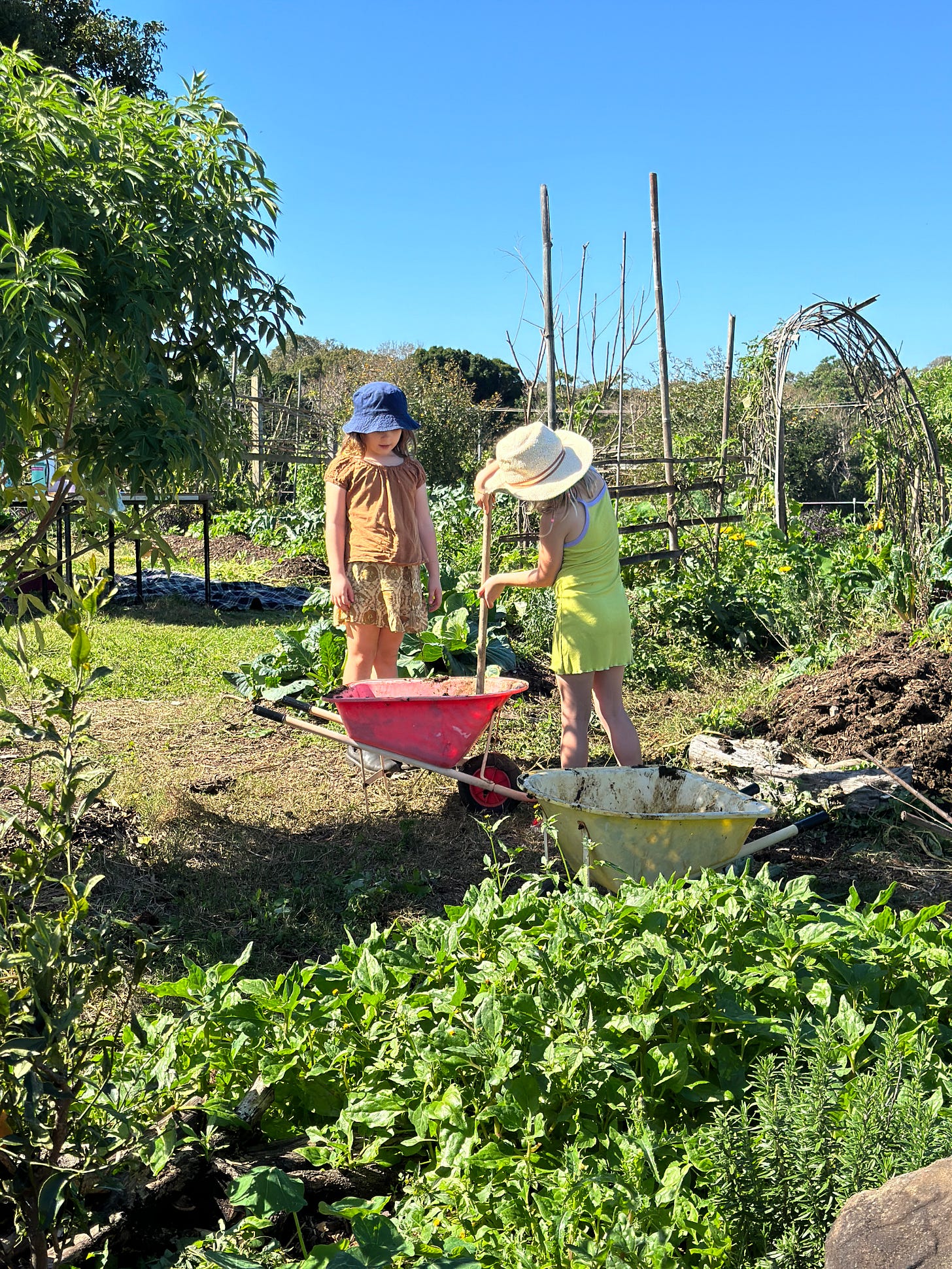
As Edie in year 2 was heard to say:
“How about the mulch could be chocolate biccies for the garden?”
“Gives it food and the poo is chocolate and chocolate biscuits is the meal.”
For me, it’s helpful to think of ways that nature tops its soil up. In a forest, leaf litter falls (mulch). Animals wander through, eating and then pooing (manure) and fruits and other fallen bits of trees decompose (compost).
There was so much ‘rich learning’ in explaining this method to the kids.
How our garden beds began
Today
ANNA’S INTENTION FOR the LSKG canteen, JABAY
There is so much more to food than tasting and eating it. For a start, it is what keeps us alive. I see my role in the Living School kitchen as key to the development of the palates of the students at this school for pleasure and also health. It is an educational role through exposing the children to foods with properties rich in ingredients that feed their growing bodies and developing minds. The art of food is also an art of science.
For instance, this week I blanched and added the Okinawa and Brazilian spinach to the basil coming out of the LSKG and made a pesto.
Okinawa spinach is known as the “cholesterol spinach” due to its potential cholesterol-lowering properties. It’s rich in iron, protein, potassium, calcium and vitamin A.
Brazilian spinach is rich in B carotene, vitamin C, iron, calcium and also has a high level of folic acid and, is high in fiber.
Basil is also full of nutrients and is anti-inflammatory and contains antioxidants. It’s antibacterial and aids digestion. Plus, it’s known to boost mental health, reduce anxiety, improve mood and enhance cognitive function.
I figure if the kids learn to love these ingredients from a young age, they are set up for life.
ONLAND LEARNING AT LIVING SCHOOL
Next week, we bring you what happened with the kids in our first couple of weeks in the kitchen and garden for 2025! Come join our growing experience and take in Anna’s Living Recipes.




